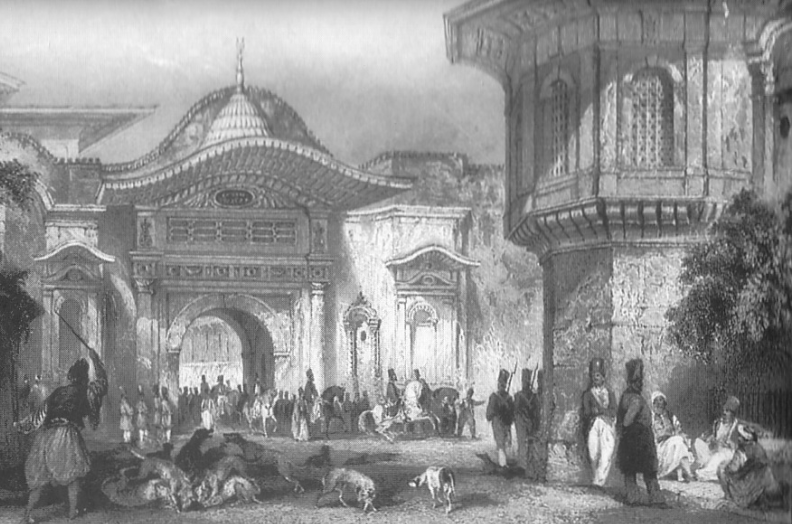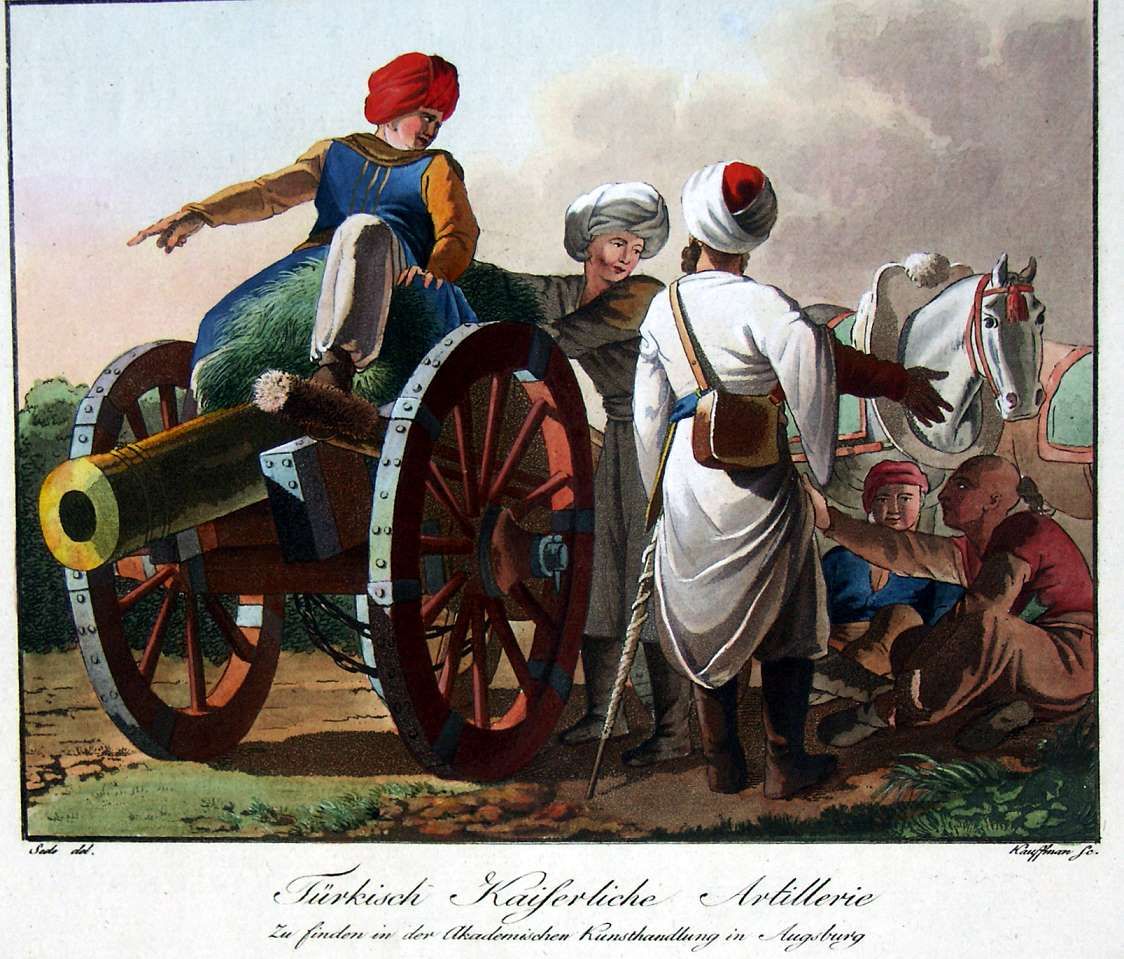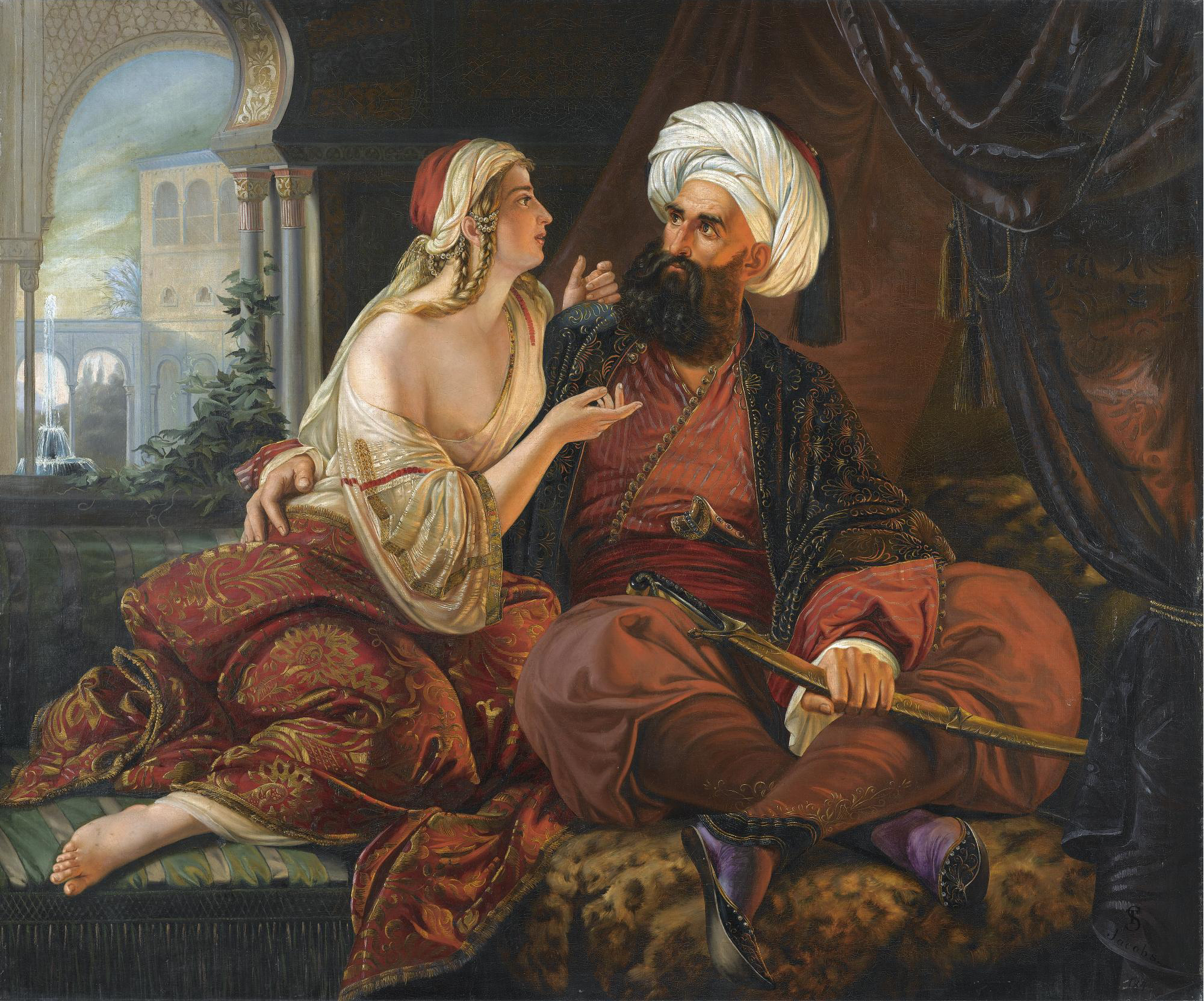| Soldier Emperor
The Ottoman Empire
in the Napoleonic Wars, Part One
By Mike Bennighof, Ph.D.
November 2022
 By the time Napoleon Bonaparte crowned himself Emperor of France and overturned Europe’s political order, the Ottoman Empire had already undergone three decades of attempted military, economic and political reform. Reversing the previous policy of de-centralization, and centuries of military tradition, proved impossible. Not until the 1820’s would the Empire finally lurch toward modernity. By the time Napoleon Bonaparte crowned himself Emperor of France and overturned Europe’s political order, the Ottoman Empire had already undergone three decades of attempted military, economic and political reform. Reversing the previous policy of de-centralization, and centuries of military tradition, proved impossible. Not until the 1820’s would the Empire finally lurch toward modernity.
Sultan Selim III came to the throne in 1789, inheriting from his uncle Abdul Hamid I a deteriorating empire with only nominal control of some of its provinces, a weak military and a depleted treasury. Plus, a war with Russia. On the positive side, Selim’s father Mustafa III had seen the need for reform and Abdul Hamid had considered it his duty to prepare his nephew to be the energetic, broadly-educated Sultan who would revive the Ottoman Empire.
Abdul Hamid had started the war, following Russia’s treaty-busting annexation of Crimea (some things never change). Things went poorly for the Ottomans on the battlefield against both the Russians and their Austrian allies, but a series of fortunate events (from the Ottoman perspective) forced the Austrians to make peace when they were on the verge of winning the war. Without their allies, the Russians also chose to end the fighting. While his European neighbors dealt with the fallout of the French Revolution, Selim had a brief breathing space in which to begin his reforms.
At the heart of Ottoman difficulties lay simple corruption. Provincial governors, under little to no oversight, simply enrolled brigands and petty criminals in their contributions to the Ottoman field armies and demanded pay for far more men than they provided. Most governors also employed Albanian mercenaries to flesh out their numbers, who cheerfully deserted from one provincial army to enroll in another and collect their signing bonus. Much of the cash provided by the Sultan to feed, clothe and arm the troops went into their pockets.

Decrees from the Sultan would be read out at the main gate to Topkapi Palace. “The Sublime Porte,” as French diplomats called it, became shorthand for the Sultan’s government as a whole.
These two factors combined to breed widespread looting, rape and robbery wherever the army marched. The Sultan’s supposed regulars, the Janissaries, proved to be elderly men clinging to their well-paid positions for life. The artillery corps existed mostly on paper, with artillerymen drawing pay while living elsewhere and working in other occupations – according to Selim, even his barber turned out to be an artilleryman. Hordes of camp followers trailed behind the armies, which boasted huge numbers but limited combat power. Meanwhile, rich landowners objected to paying taxes.
In theory, the Sultan had a standing army, the Janissary corps. Janissaries had once been recruited from Christian boys taken as tribute from the empire’s European provinces and made slaves of the Sultan; this practice dwindled throughout the 1600’s and no such slaves were taken after 1700. By then, Janissary privileges (tax exemption, pay, meals) had become so attractive that the Ottoman government faced pressure to keep these appointments as a reward for loyal Muslims.
Prominent families now used their court connections to place their sons with the Janissaries, while the Janissaries themselves pressed their commanders to enroll their own sons. Just how many Janissaries made up the corps is difficult to track, since a fair number did not actually exist outside of the payroll. As the Sultan’s palace guard, they provided between 10,000 and 20,000 men for campaigns waged in the 1700’s; thousands more served provincial governors as well or in the garrisons of frontier fortresses.
Selim hoped to rebuild the Janissary corps with European-style weapons, tactics and training, but the onerous requirements – that the men appear for drill two days a week – provoked open mutiny. The project went nowhere, and the young Sultan looked to replace them with new regiments recruited initially from Constantinople’s urban unemployed and later from Muslim peasants enrolled by provincial governments and sent to the capital for training.

Pre-reform Ottoman artillerymen.
Before he could establish an effective, modern army, Selim needed steady cash flow. The Irad-I Cedid, or New Treasury, would collect new taxes on things like alcohol and wool, excise taxes previously dodged by non-Muslims, and a few others re-directed into this fund. But to enforce those taxes outside Constantinople, Selim needed reliable enforcers. And he could not recruit and train those enforcers without a reliable revenue stream. The provincial governors, now acting more like semi-independent warlords, simply ignored any directives they disliked and refused to forward tax revenues to the capital.
The New Order called for governors to be limited to three-year terms. Taxes would be collected directly by agents of the Imperial Treasury rather than private tax-farmers, who gathered taxes and kept a percentage as their commission. And the feudal land fiefs known as timars distributed in exchange for military service would revert to the Sultan on the death of their holders rather than be passed on to heirs or sold.
On the fringes of empire, governors of what once had been Ottoman provinces – Egypt, Iraq, large swathes of Anatolia and the Balkans – conducted their own relations with European states. Mosques still read out the Sultan’s name as Defender of the Faith – a potent symbol in Muslim lands – and most (though not all) of the governors would fight the Sultan’s enemies. The opportunities for plunder and graft presented by war could not be easily laid aside. Unable to suppress them, Selim went through unending cycles of declaring powerful governors like Osman Pasvanoglu of Vidin or Ali Pasha of Yanina to be rebels, and then pardoning them, only to see them defy his authority again.

Ali Pasha and his favorite wife, Kira. Ali’s dying wish during his 1822 execution was that Kira also be beheaded so that no other man would know her sublime love. She lived another 12 years before dying of dysentery.
Other challenges came from rising consciousness among religious and national minorities within the Empire. The Maniots, who inhabited a rugged district of south-western Greece never occupied by the Ottomans, gave constant trouble. The Souliotes, Albanian Orthodox Christians residing in what is now north-western Greece, revolted in 1803 and the Serbs rose in 1804, starting a complicated nine-year conflict that at one point had Selim’s forces fighting alongside the Serbs against renegade Janissaries. Unable to crush these uprisings from the center, Selim III had to rely on his fractious governors to put down the rebels, making it that much more difficult to centralize his authority.
Selim hoped to fight future wars with a New Model Army, the Nizam-I Cedid, funded by his New Treasury. The first book printed on an Ottoman printing press, Ibrahim Müteferrika’s Rational Basis for the Polities of Nations (sometimes titles Treatise on Tactics) had argued that Islam allowed the importation of technology and methods to fight the enemies of the Faith. After that book appeared in 1732, a whole school of thought arose around the notion that new methods could be learned from foreigners without challenging the Blessed Quran. The Grand Mufti of Constantinople, the empire’s leading Islamic scholar, gave his blessing.
Selim adopted much of this, using his new revenue to fund his new army plus the infrastructure to support it, most notably a modern cannon foundry. The French Revolutionaries agreed to send Selim the military advisors he sought; initially these included, according to him at least, a young Napoleon Bonaparte. Instead, the mission would be headed by Jean-Baptiste Aubert du Bayet, and included artillery experts (but not Napoleon) as well as infantry and cavalry officers.
Aubert’s greatest success came in building a cannon foundry and training gunners to use the weapons; most of these appear to have been the Gribeauval-system 12-pounder, the heavy field gun that Napoleon affectionately called his “beautiful daughters.” In addition, his men also modernized the foundry built in 1772 under direction of the French emigré Baron François de Tott and set it up to produce the Gribeauval 24-pounder howitzer.

The Grand Mufti blesses the Sultan’s beautiful daughters.
The New Model Army would get its first test against Napoleon, when he led the French invasion of Egypt in 1798. Recruiting went slowly, with the Janissaries doing their best to obstruct the project. But the small number of New Model soldiers sent to the Syrian front to face the French fought well, encouraging the Sultan. Meanwhile, the old-style provincial troops landed in Egypt to eject the French were smashed by Napoleon at Abukir in 1799.
The French would eventually be removed from Egypt, in 1801, but that didn’t restore the lost province. One of those Albanians became the virtually independent ruler of a new dynasty. But it did restore peace, at least briefly, but when war returned to Europe in 1803 the French, the British and the Russians all vied for an alliance with the Ottomans. Selim finally signed with the Russians in September 1805, but following the French victory at Austerlitz in December he declined to ratify the agreement, recognizing Napoleon as Emperor of the French and agreeing to an alliance.
In the summer of 1806, Selim attempted to spread his New Order to the European provinces, ordering the governors there to build barracks and enroll recruits. Instead, several of them called out their armies and confronted the Sultan, who ultimately backed down. Selim had averted civil war, but at the cost of a great deal of his prestige. He slowly began to re-assert his authority, but when he fired the rebellious Constantine Ypsilanti of Wallachia, he also violated an 1802 agreement allowing the Russians to approve any change in the governance of Wallachia and Moldavia, the so-called “Principalities.” That gave the Russians the excuse they sought, and in November 1806 40,000 Russian poured into the Principalities without a declaration of war. A month later Selim made the war official.
Click here to order Soldier Emperor right now.
You can order Great Powers right here.
Please allow an extra three weeks for delivery.
The Emperor’s Package
Soldier Emperor
Soldier Emperor: Indian Empires
Soldier Emperor: Great Powers
Retail Price: $189.97
Package Price: $150
Gold Club Price: $120
You can experience the Emperor's Package right here.
Please allow an extra three weeks for delivery.
Sign up for our newsletter right here. Your info will never be sold or transferred; we'll just use it to update you on new games and new offers.
Mike Bennighof is president of Avalanche Press and holds a doctorate in history from Emory University. A Fulbright Scholar and NASA Journalist in Space finalist, he has published a great many books, games and articles on historical subjects; people are saying that some of them are actually good.
He lives in Birmingham, Alabama with his wife, three children, and his new puppy. He misses his Iron Dog, Leopold.
Want to keep Daily Content free of third-party ads? You can send us some love (and cash) through this link right here.
|
